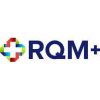China
In China, where the vast medical device market was valued at more than $40 billion in 2019, authorities have moved to secure the safety and efficacy of medical devices while at the same time taking actions to protect domestic manufacturers against foreign competition.
In March, the country’s National Medical Products Administration (NMPA) initiated random inspections on manufacturers and distributors of medical devices. Under the NMPA mandates that went into effect March 13, the agency and all of its branches throughout China are charged with formulating medical device quality sampling inspection plans and making arrangements for inspections in the first quarter of each year. The inspections will focus on devices considered high safety risks, those frequently used by clinics, and those deemed of questionable quality, among others.
Other new regulations on medical devices in China include increased obligations on all local agents holding product registrations and especially for local agents of medical devices produced abroad. The new regulations increase the liability of local agents with their overseas partners for violations and cut the time required for reporting of safety issues. They also require local agents to analyze, monitor and clarify product risks and, in the case of implantable medical devices, permanently retain monitoring records. If applicable, the agents are also obligated to cooperate with government authorities regarding investigations and recalls.
To shelter the country’s domestic medical device industry from foreign competition, China has begun to require state-run hospitals to buy more domestically produced medical devices. Those that do not do so, can lose government insurance reimbursements and be subjected to lengthy audits of any foreign devices they import.
The protective measures have had a startling effect. Since 2018, the share of the domestic medical device market held by Chinese producers is surging, while those of medical device producers from the United States and other Western countries are on the decline.
South Korea
South Korea is also bolstering regulations on medical devices, particularly those produced abroad. Since January, regulations from the Ministry of Food and Drug Safety (MFDS) subject medical devices produced outside Korea’s borders to new packaging and labeling requirements, mandating the inclusion of expiration dates, usage plans, and whether a device is intended solely for the purpose of conducting research. The regulations also increase the number and class of medical devices subject to regulation. In addition, whereas in the past, registrations did not require renewals, medical devices will now expire after five years.
Other new regulations on scarce and urgently needed devices mandate manufacturers to submit surveys proving sufficient demand for the devices, detail plans for why a device is needed, explain the reasons for supplying such devices, and specifically reference particular patients or healthcare institutions.
In-vitro diagnostic (IVD) products in South Korea are also subject to tightened regulations to improve oversight of their safety and quality. The regulations, which went into effect in May, mandate procedures for clinical reviews of IVDs and certification requirements for hospitals and laboratories conducting IVD testing. New labeling guidelines on IVDs also went into effect this year. In addition, a new classification system established by the Ministry for Food and Drug Safety (MFDS) groups IVDs into four categories, based on their potential risk.
Taiwan
Taiwan also took major steps this year to regulate medical devices, bringing the country in line with international quality management standards and creating a mechanism to obtain quick approvals for innovative products.
In January, Taiwan put into effect the Medical Device Management Law, separating the regulation of medical devices from pharmaceutical products for the first time. The broad-based legislation standardizes registration of devices, tightens the classification system, and permits rapid approvals for innovative products. For devices deemed to be low risk, the legislation will permit online registration without the need for on-site audits.
Malaysia, Indonesia, Singapore, and Thailand have also significantly strengthened regulations on medical devices this year.
Malaysia
A regulation that went into effect July 1 in Malaysia requires medical device manufacturers to get pre-approval of their device advertisements with the government’s Medical Device Authority (MDA).
Malaysian health regulators are also boosting restrictions on in vitro diagnostics tests on blood, tissue and other samples. Under draft regulations the MDA released in the spring, IVD tests will be separated into four categories based on risk. The MDA is also drafting guidance to classify medical devices into five categories, depending on how they are packaged and sold.
Meanwhile, an MDA regulation that went into effect in July requires medical device manufacturers marketing their products to report any adverse events related to their use that could negatively impact a patient’s health.
Indonesia
Indonesia’s Ministry of Health is similarly fortifying its safety regimen for medical devices. Under new regulations, devices will be subject to sampling and testing in distribution and health facilities, reviews of advertising and labeling, and regular audits of technical and clinical information offered to patients/consumers. The moves follow the launch in 2019 of a digital signature system to modernize how medical device marketing authorization licenses are obtained.
Singapore
Singapore has been particularly active in strengthening its already strict requirements on medical device safety. This year, it went even further. New regulations published by the country’s Health Sciences Authority (HSA) require medical device manufacturers to take specific actions to limit the health risk associated with their products already on the market in Singapore.
Called the Field Safety Corrective Action guidance, the rule requires informing the HSA of the corrections. The new regulations apply to corrective and preventative actions, post-market surveillance and recalls. A new online system, the Online Safety Compliance Application and Reporting (OSCAR) system shifts reporting of such hazards into an online format.
And as computer software becomes more essential to the operations of many medical devices, Singapore’s medical authority is developing guidelines that would establish requirements on licensing and registration of downloadable or web-based software, and would mandate quality management and cybersecurity systems.
Thailand
Thailand, seeking to bring its regulations into alignment with the standards of The Association of Southeast Asian Nations (ASEAN), of which Thailand is a member, moved this year to classify the potential health risks of medical devices. Health authorities are creating four categories each for both in vitro and non-in vitro medical devices, separated by level of risk from low to high.
Taken together, the moves this year demonstrate both the growth of Asian markets for medical devices, as well as their increasing complexity. As medical devices become both more essential and more refined, authorities are moving to quell concerns about safety at the same time they try to foster opportunities for their domestic producers. And amid the continuing COVID-19 pandemic, regulatory bodies that govern medical devices have taken steps to ease import restrictions and expedite registration processes for needed goods, seeking to ensure that regulations do not block the development or supply of devices that could save lives.
The result is a fast-moving regulatory environment in Asia in 2020 and the likelihood of more of the same in 2021.







